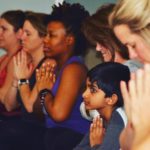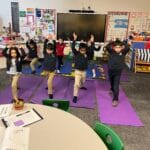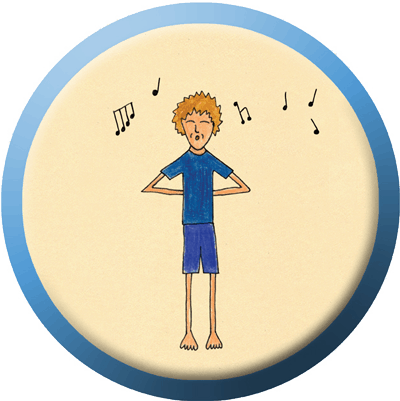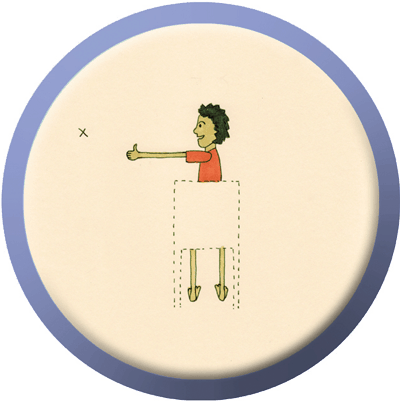Yoga & Mindfulness is good for kids? Prove it!
For the research lovers and naysayers, the believers needing back up, parents wanting proof and the educators pursuing funding, this is for you…
IAYSM Research Bibliography
A comprehensive listing of research articles and papers compiled by Adenia Linker IASYM Bibliography final
Benefits of Yoga for Psychosocial Well-Being in US High School Curriculum- Noggle et al
Improvement in Static Motor Performance following Yogic Training of School Children- Telles et al.
Reducing Stress in School-age Girls Through Mindful Yoga – White 2012
Research on school-based yoga and mindfulness
Research on school-based yoga and mindfulness suggests that these programs may have a number of positive effects on student health, behavior, and performance. (Butzer et al., 2016; Felver et al., 2015; Ferreira-Vorkapic et al., 2015; Khalsa & Butzer, 2016; Chung, 2018; Maynard et al., 2017; Serwacki & Cook-Cottone, 2012; Zenner et al, 2014). The following list outlines some of the benefits of school-based yoga and mindfulness practices that address the whole child, thus maximizing the development of academic, social and emotional competence in addition to benefits for teachers and classroom climate:
- Provides students with healthy ways to express, balance, and regulate their emotions and behavior (Accardo, 2017; Bergen-Cico et al., 2015; Dariotis et al., 2016; Daly et al., 2015; Klingbeil et al., 2017; Razza et al., 2015).
- Promotes a more relaxed, comfortable state of being – the perfect state for teaching and learning (Dai et al., 2015).
- Has a positive impact on students’ academic performance (Anila et al., 2016; Butzer et al., 2015; Hagins and Rundle, 2016; Kauts & Sharma, 2009 Singh et al., 2016; Theirry et al., 2016; Wang & Hagins, 2016; Bennett & Dorjee, 2016).
- Brings students into the present moment – the most basic requirement for learning (Eastman-Mueller et al., 2013; Wang & Hagins, 2016).
- Encourages community and connectedness within the classroom (Conboy et al., 2013; Finnan, 2015).
- Provides opportunities for beneficial motor breaks throughout the day (Fox, 1999; Sibley & Etnier, 2003).
- Eases anxiety and tension (such as pre-test or performance jitters) (Bellinger et al., 2015; Etherington & Costello, 2018; Frank et al., 2014; Noggle et al., 2012).
- Reduces anger, depression, and fatigue (Felver et al., 2015; Sibinga et al., 2015; Malboeuf-Hurtbise et al., 2016; Sibinga et al., 2016).
- Cultivates balanced psychological and physiological responses to stress, such as improved stress management (Miller et al., 2014; Wang and Hagins, 2016), reduced problematic stress responses (Feagans Gould et al., 2012; Mendelson et al., 2010), and decreased cortisol concentrations (Butzer et al., 2015).
- Enhances focus, attention, concentration, comprehension and memory (Case-Smith et al., 2010; Ehud et al., 2010; Pradhan & Nagendra, 2010; Napoli et al., 2005; Manjunath & Telles, 2004; Wimmer et al., 2016; Quach et al., 2015; Mak et al., 2018; Tarrasch et al., 2018).
- Provides opportunities for reflection, patience and insight, thereby reducing problem behaviors such as suspensions, bullying, unexcused absences, detentions, impulsivity, hostility, and reactivity (Bakosh et al., 2015; Centeio et al., 2017; Fishbein et al., 2016; Franco et al., 2016; Frank et al, 2014; Frank et al., 2016; Parker et al., 2014; Salmoirago-Blotcher et al., 2018).
- Supports social and emotional learning (Butzer et al., 2016; Gueldner & Feuerborn, 2015; Maynard et al., 2017).
- Enhances flexibility, strength, and physical well-being (Chen & Pauwels, 2014; Folleto et al., 2016; Mohanty et al., 2015; Purohit et al., 2016; Verma et al., 2014).
- Improves mind/body awareness and self-awareness (Conboy et al., 2013; Ramadoss & Bose, 2010).
- Enhances executive function (i.e., processes required to select, organize, and properly initiate goal-directed actions) by combining the cognitive and neurological benefits of physical activity (Best, 2010; Diamond & Lee, 2011; Fumoto et al., 2010; Ratey, 2013) with breathing exercises and mental focus techniques.
- Enhances resilience and coping frequency, thereby helping students adapt and cope with negative life events (Khalsa et al., 2012; Felver et al., 2018; Ramadoss & Bose, 2010; White, 2012; Sarkissian et al., 2018).
- Improves confidence and self-esteem (Bhardwaj & Agrawal, 2013; Sethi et al., 2013).
- Encourages respect for oneself and others (Dubey, 2011; Fishbein et al., 2016).
- Improves physiological outcomes such as respiratory muscle strength (D’Souza & Avadhany, 2014), heart rate variability (Bothe et al., 2014), visual perception and motor accuracy (Tarrasch et al., 2017) and stress reactivity (Fishbein et al., 2015).
- Creates a calm, harmonious classroom and positive school climate (Butzer et al., 2015; Kielty et al., 2017; Wisner, 2014).
- Has beneficial effects on outcomes for classroom teachers, including increases in calmness, mindfulness, well-being, sleep quality, emotional regulation, and positive mood, as well as improvements in classroom management, physical symptoms, blood pressure, and cortisol awakening response, and decreases in anxiety and mind/body stress (Crain et al., 2017; Emerson et al., 2017; Harris et al., 2016; Jennings et al., 2013; Kemeny et al., 2012; Nosaka & Okamura, 2015; Rao et al., 2017; Schussler et al., 2016; Sharp & Jennings, 2016; Telles et al., 2018). Taken together, these benefits for teachers support a positive classroom climate, teacher effectiveness and positive student outcomes (Roeser et al., 2012; Singh et al., 2013).
Anecdotal research
Increasing numbers of teachers and administrators are recognizing that yoga, breath awareness and mindfulness activities are beneficial to their students’ (and their own!) mental health and well-being, and to the learning environment in general. In addition, yoga and mindfulness practices promote self-awareness and self management skills, the basis of social and emotional learning (SEL) competencies as espoused by CASEL (Collaborative for Social and Emotional Learning). As yoga offers a non-competitive alternative to sports that supports PE and health standards, it’s also becoming part of many physical and health education curricula and after school enrichment offerings.
The many anecdotal benefits of yoga and mindfulness-based practices for children are well known, and carefully-controlled scientific research is growing every year. Based on increasing evidence supporting the efficacy of yoga for children, school-based yoga programs are being implemented across the United States. These programs are designed to address stress and anxiety, place emphasis on individual abilities rather than competition, and provide a non-threatening and gentle method to increase physical fitness and enhance health, well-being and emotional resilience.
Research in this field is preliminary, however scientific studies suggest that children who practice yoga-based movement, conscious breathing, and mindfulness/meditation activities are better able to regulate their emotions, manage stress and calm themselves. They may also choose better foods to eat and engage in more physical activity than children who do not (Butzer et al., 2016; Khalsa & Butzer, 2016). Studies also suggest that centered, calm and focused children learn more easily, have better social skills and, in general, are happier kids.
Studies also show that exercise facilitates children’s executive function (i.e., processes required to select, organize, and properly initiate goal-directed actions) by increasing activation in the prefrontal cortex and serotonergic system. By integrating physical movement with breathing exercises and mindful awareness, yoga serves as a promising form of physical and cognitive training to enhance learning-related outcomes (Butzer et al., 2016).
Research Centers and Laboratories
Stanford University Center for Compassion and Altruism Research and Education
Osher Center for Integrative Health
Kripalu Center and Khalsa Yoga Research Lab
The Center for Investigating Healthy Minds
Center for Mindfulness University of Massachusetts Medical School
Stanford University Clinically Applied Affective Neuroscience Lab
Positive Psychology Center– University of Pennsylvania
Penn Program for Mindfulness
Mindful Awareness Research Center, UCLA
Mindsight Institute
Mind and Life Education Research Network
Center On The Developing Child at Harvard University
Brown University Contemplative Studies Initiative
Yale Child Study Center
Emory University Collaborative for Contemplative Studies
National Center for Complementary & Alternative Medicine
Niroga Institute
Educational Organizations and Centers
International Association for School Yoga & Mindfulness (IASYM)
The Alliance for a Healthier Generation
Healthy Schools Program
Center for Contemplative Mind in Society
Consciousness-Based Education Association
Center for Contemplative Mind in Society
Collaborative for Academic, Social and Emotional Learning (CASEL)
Mindfulness in Education Network
Association for Mindfulness in Education
Garrison Institute Contemplation and Education Initiative
Hawn Foundation MindUp Program
Mindful Schools
Mindfulness in Schools Project
Yoga Health Foundation





 {Tada drastuh svarupe vasthanam}
{Tada drastuh svarupe vasthanam}



